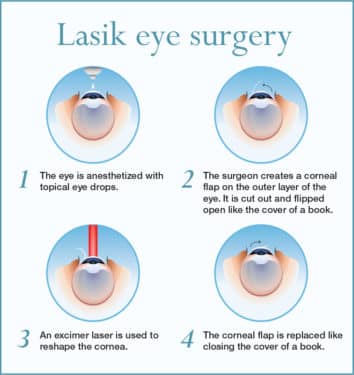Embark On A Captivating Trip Through The Development Of Cataract Surgical Treatment Methods, From Ancient Origins To Sophisticated Developments That Are Improving The Future Of Eye Care
Embark On A Captivating Trip Through The Development Of Cataract Surgical Treatment Methods, From Ancient Origins To Sophisticated Developments That Are Improving The Future Of Eye Care
Blog Article
Staff Writer-Rose Thestrup
As you check out the evolution of innovative cataract surgery techniques, you'll witness a journey noted by ingenuity and precision. From ancient methods that led the way for modern technologies to cutting-edge technologies that are revolutionizing the area, the thorough review of cataract surgical procedure methods is a testament to human development and commitment to boosting client end results. The intricate interplay between historical methods and futuristic improvements creates a fascinating narrative that sheds light on the advancement of one of one of the most common operations worldwide.
Historical Techniques and Developments
Explore exactly how early surgeons reinvented cataract treatment by utilizing ingenious techniques and tools. In the past, cataract surgical treatment was a high-risk and painful treatment. Nevertheless, ancient Indian doctors were amongst the very first to try surgical interventions for cataracts, making use of a strategy called 'formulating' where a sharp tool was used to push the cataract back right into the eye. This technique, though crude by today's requirements, laid the groundwork for future advancements in cataract surgery.
As time progressed, Arab medical professionals made considerable contributions by creating specialized needles for cataract extraction. These needles were made use of to penetrate the cataract and afterwards remove it from the eye, marking a considerable enhancement in medical accuracy.
Later on, in the 18th century, the French surgeon Jacques Daviel spearheaded the method of extracapsular cataract extraction, where the entire lens was eliminated undamaged through a larger incision. This noted a significant advancement in cataract surgical treatment techniques, leading the way for the modern procedures we make use of today.
Modern Surgical Approaches
Early methods in cataract surgical procedure have progressed considerably, resulting in the growth of contemporary medical techniques that focus on precision and enhanced person end results. Modern cataract surgical treatment now commonly includes a procedure called phacoemulsification, where an ultrasonic tool separate the cataract for removal through a little incision. This strategy permits quicker recovery and minimizes the danger of complications contrasted to older methods.
In addition, making use of innovative intraocular lenses (IOLs) has actually revolutionized cataract surgical procedure results. These lenses can correct not only the cataract but also other refractive mistakes like astigmatism, minimizing the need for glasses post-surgery.
simply click the following webpage have accessibility to innovative imaging technologies that aid in accurate preoperative preparation and intraoperative decision-making. Optical comprehensibility tomography (OCT) and other imaging modalities give in-depth images of the eye's frameworks, allowing for a much more tailored technique to each person's surgical treatment. With these advancements, modern-day cataract surgical procedure strategies remain to improve, providing people much safer treatments and far better visual end results.
Emerging Technologies in Cataract Surgery
With advancements in technology reinventing the area, cataract surgical treatment is witnessing the combination of cutting-edge strategies for improved person outcomes. Emerging technologies in cataract surgical procedure are improving the landscape of ocular procedures. One such advancement is femtosecond laser innovation, which enables specific corneal cuts, capsulotomies, and lens fragmentation, resulting in boosted medical accuracy and results.
Additionally, intraoperative aberrometry is gaining popularity, making it possible for real-time measurements of refractive errors during surgical procedure to boost intraocular lens power computations and decrease postoperative refractive surprises.
Furthermore, using innovative imaging technologies like optical comprehensibility tomography (OCT) and intraoperative wavefront aberrometry help specialists in specific surgical preparation and implementation. These tools give comprehensive physiological details and aid customize surgical approaches for each and every patient's unique eye characteristics.
Additionally, growths in expert system are being checked out to aid in preoperative planning, intraoperative decision-making, and postoperative care, possibly maximizing medical results and individual contentment. Embracing these emerging technologies in cataract surgical procedure holds pledge for additional enhancing person end results and ensuring the continued evolution of sensory medical strategies.
Conclusion
As you trip via the background of cataract surgery, you witness the change from old practices to innovative modern technologies. Like cataract surgery which lens climbing from the ashes, cataract surgical procedure has actually progressed into a sign of hope and innovation.
Just as a caterpillar arises from its cocoon as a beautiful butterfly, cataract surgical treatment has actually thrived into a polished art form, offering individuals clearer vision and a brighter future.
The evolution continues, shining a light on countless opportunities.
